 |
It's a Scandal! (21st December 2013 11:14)
Having declared Nige the 2013 Hall of Fame winner last night, on the back of some hasty calculations, it seems I either can't read or I can't use a calculator correctly. After writing up the reports and scores from the games played last night, the site has done the calculation correctly and declared that this year's Hall of Fame has ended up a tie with both Nige and Guy ending up on 37.5%. I had entered Guy as having played 89 games for the year rather than 88.
Looking at the club rules on the tie-break procedure, I have found ... we don't have a tie-break procedure (probably because we don't have any club rules). Therefore, I declare that for the first time in our history, we have joint winners of the Hall of Fame and congratulations should go to both Nige and Guy.
Right, let the howls of indignation begin ;-) |
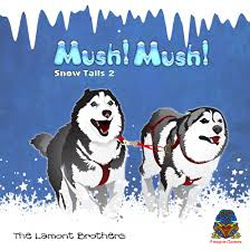 |
More tales about snow tails (13th December 2013 22:50)
Late back from London tonight but, as some consolation, two parcels had arrived while I was away. The first was my BGG competition prize of Trains & Stations, an interesting railway dice game - a copy of which I already have. The second though was my Essen pre-order of Mush! Mush! which is subtitled Snow Tails 2 and I hope is a decent refinement of the original Snow Tails. Looking forward to playing it soon.

|
 |
Counter #63 (11th December 2013 19:57)
The new issue of Counter arrived today. Contained in its 84 pages are reviews of more than twenty games including Concordia, Machi Koro, Mush! Mush! Prosperity, Russian Railroads and Spyrium. There are also articles on GenCon and Essen, Rick thornquist on Learning Games, The Counter Guide to Worker Placement games and the usual letters page. You can learn more about Counter at the magazine's website.

|
 |
Shrewsbury Boardgames Club - Change of Venue (10th December 2013 19:03)
This Friday's session (13th December 2013), which was due to take place at Nige's house, won't because his boiler has packed up and it's rather cool up the Stiperstones at this time of year without any heating.
Instead, Mark K is picking up the slack so those travelling out to Oswestry will, I'm sure be offered a feast of biscuits, cake, cheese and crackers etc.
The following week will, as planned, be at Garry's house - but without the biscuits, cake.......... |
 |
Wayback When? - December '93, '98, '03, '08 (5th December 2013 05:18)
Wayback When? is a review of the games I was playing five, ten, fifteen and twenty years ago with me highlighting the most memorable titles of each particular month in the vain hope that I might dig out some of them to play again. This month we’re looking at December 1993, 1998, 2003 and 2008.
  
December doesn't seem to be a very good month for trying new games. In 2008, I only played one new game (out of just 11 in the whole month) but it is a fine football dexterity game for two or teams of two. Weykick is frantic fun but mind your knuckles on the crossbar below the table.
Five years earlier, I managed to play just two games in the month, although both of them were new to me. The Bridges of Shangrila was a typically dry but interesting game by Leo Colivini while Terra was a semi-cooperative game by Bruno Faidutti, where you try to get the most points possible but, if collectively you pollute the planet too much, everyone loses - inevitably people end up being too greedy hence dooming the planet.
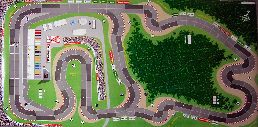  Â Â 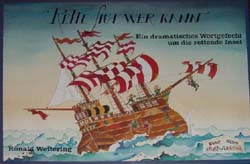
In 1998, I got to play Das Motorsportspiel for the first time, motor racing with real time pressure to complete your move before the sand-timer runs out. We also played the hilarious Bamboleo, a dexterity game where a knowledge of the laws of physics is usually an advantage - that is, unless you're a physics teacher.
The stand-out game of December 1993 was Rette Sich Wer Kann (more recently released as Lifeboats) and is an evil game of tossing your companions out of the rescue boats to be eaten by sharks - don't play with anyone who bears a grudge. |
 |
Stak Bots Expansion on Kickstarter (4th December 2013 08:43)
You may remember I recently reviewed a neat little battling card game called Stak Bots, designed by Tom Norfolk and published by DogEared Games. Well, not one to rest on his laurels, Tom has an expansion up on Kickstarter running until 18th December. This is a sixty card deck of sixteen additional varieties of Bot to add to the original sixteen. Or you can pledge for both the original and expansion decks together. All the details are on the Kickstarter page here. |
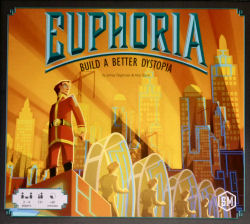 |
Kickstarter Euphoria (3rd December 2013 21:20)
Got home today to find my copy of Euphoria: Build A Better Dystopia, which I backed on Kickstarter, had arrived. The production looks very, very good and I'm hopeful the game will be a decent one too. |
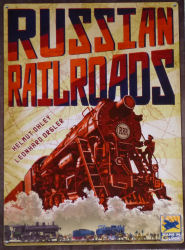 |
November 2013 roundup (1st December 2013 18:15)
November saw me play just 12 games of 10 different titles, 4 of which were new to me. The small number of games played was due to half the month being spent in the Caribbean where, remarkably, I played no games at all (other than a few games of the excellent Street Soccer ipad app. The new games were Relic Runners, Arche Noah, Russian Railroads and 1911: Amundsen vs Scott.
I added twelve new titles to the collection which were Auf Teufel komm raus, Arche Noah, Nauticus, Russian Railroads, Piraten Kapern, Flash 10, Steam Noir: Revolution, Homesteaders, Trains and Stations, Prosperity, Concordia and Legendary: Fantastic Four. My unplayed games list has unsurprisingly grown to 42 this month and game of the month was a fairly easy call with Russian Railroads being the pick. We wondered whether there might be one dominant strategy but reading around Boardgamegeek, this doesn't appear to be the case. |
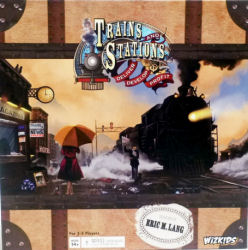 |
The Winner Takes It All (4th November 2013 22:15)
Just found out today that I won a contest on Boardgamegeek. I don't enter all of them but I do take part if the prize is a game I'm interested in. And this is the first one in which I've been successful. So Wizkids will shortly be sending me a copy of Trains and Stations. Woohoo! Perhaps I won't mention the fact that a copy is already on its way to me from Germany.

|
 |
Wayback When? - November '93, '98, '03, '08 (3rd November 2013 16:12)
Wayback When? is a review of the games I was playing five, ten, fifteen and twenty years ago with me highlighting the most memorable titles of each particular month in the vain hope that I might dig out some of them to play again. This month we’re looking at November 1993, 1998, 2003 and 2008.
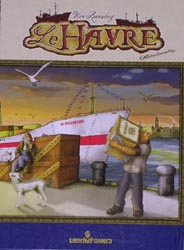 Â Â 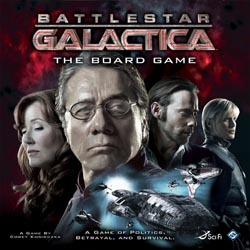 Â Â 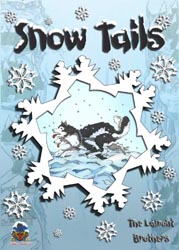
Five years ago, we were first introduced to Le Havre, another good meaty game from Uwe Rosenberg which has remained a fairly regular game in our group. We also immersed ourselves in the classic semi-cooperative and very thematic Battlestar Galactica (I am not a cylon!) and a great racing game from the Lamont Brothers, Snow Tails. The follow-up, Mush Mush, should be sent to me pretty soon and I can't wait to try it.
 Â Â 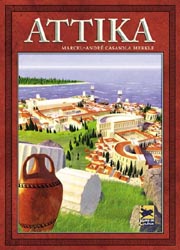 Â Â 
In November 2003, we played Anno 1503, another of Klaus Teuber's post-Settlers games and this one was really good. Attika also saw its first outing this month and, interestingly, it got played at the club only a week ago and seemed to still hold up pretty well. Also, I couldn't pass up mentioning the first time we played Igloo Pop, one of the fun games that Nige actually admitted to enjoying.
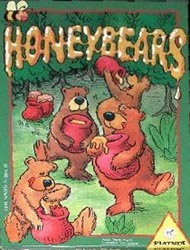 Â Â  Â Â 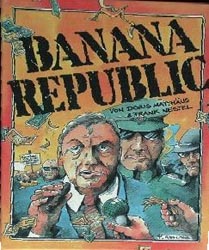
In November 1998, I played the delightful race games Honeybears and Igel Argern for the first time. In Honeybears, you use cards to advance the bears towards the finish line but want to keep cards of the leading bears to score you more points. Igel Argern is a great Doris & Frank design where hedgehogs are scrambling over other hedgehogs and trying to avoid the pits in a team race to the finish. Five years earlier, the only notable new game I played was another Doris & Frank game about a corrupt political system where you are bluffing your way towards getting voters to vote for your candidate. |
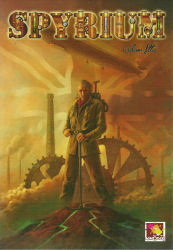 |
October 2013 roundup (1st November 2013 09:13)
In October I played just 12 games of 9 different titles, 8 of which were new to me. The new games were Carcassonne: The Dice Game, Casa Grande, Spyrium, Stak Bots, Revolution, Ticket to Ride: Legendary Asia, Sonne und Mond and SOS Titanic.
October is traditionally the month when the additions to my collection explode but this year I didn't visit the Essen game fair. Nevertheless, I still added 15 titles to the collection which were Gunrunners, Relic Runners, Spyrium, Carcassonne: The Dice Game, Fleet, Revolution, Dixit, SOS Titanic, Terra Mystica, UGO, Palmyra, CV, Glastonbury and Coal Baron. In addition, two further orders from Germany are on their way to me with a further ten games but they'll appear as November acquisitions. My unplayed games list has unsurprisingly increased from 29 to 35 this month and game of the month was a fairly easy call with the new William Attia game, Spyrium, taking the trophy although SOS Titanic gave it a bit of a run for its money but I've only played it solo so far.

|
 |
Review: Stak Bots (17th October 2013 20:03)
What is it all about?
Stak Bots is an interesting card game about battling robots designed by Tom Norfolk and published by DogEared Games in 2013. It is playable by two or more players or teams and has variable rules modules so you can alter the complexity and length of each game. A basic two-player game can be completed in 10-15 minutes.
What's in the box? The game comprises a deck of 60 cards and a set of rules. The cards are good quality and have a nice feel to them. The illustrations are simple and the icons and text are clear. Each card shows one of sixteen different types of robot (“Botsâ€); its Power, the amount of damage it does and can receive; and details of any effects it causes when played. The rules sheet is well laid out and contain lots of information, although a few more illustrations showing how the game plays might have been helpful. That’s not to say the rules aren’t clear but illustrating how attacks work on a Stak would have made things easier.
How does it play?
The idea behind the game is very simple: Try to reduce everyone else’s stack of cards (their Stak) to zero while trying to stop others from doing the same to you. Each player starts with a Stak of 9 cards with only the top card turned face up. They also start with a hand of two cards and the remaining cards form a face down draw deck. On a player’s turn, they draw a card and can then carry out any number of three different types of action in any order. Firstly, you can “Play†a card from your hand to the top of your Stak making sure you can still see any face-up cards below it. Certain cards have effects that trigger when you play them; otherwise the card stays on your Stak until you scrap it or it is destroyed. Secondly, you can “Scrap†(i.e. discard) a card from the top of your Stak or from your hand to the Scrapheap (discard pile). You may need to do this if you can’t destroy an opponent’s card (or choose to do it for tactical reasons), because at least one card has to be added to the scrapheap each turn. Finally, you can “Attack†with the top card of your Stak. You can attack multiple times with the same card but only use that one card on the same turn. Attacking involves doing damage to the top Bot of an opponent’s Stak equal to your card’s power and receiving damage equal to the power of the opposing card. Any card receiving damage greater than or equal to its power is destroyed. If your Bot attacks multiple times, its attack is always at full power, while the damage you receive accumulates until your Bot is destroyed or you end your turn, at which point you fully heal. As soon as a player’s Stak is exhausted, they are out of the game and the last player standing wins.
What do I think?
Stak Bots is a game with a very simple rule set and, when you first start, it appears pretty mindless – higher power cards are stronger so play those to destroy weaker cards and protect your own Stak. However, it is more about trying to combine the entry effects on cards with the cards already on your Stak that is the key to the game. And once you start to see these linkages, the game becomes more interesting. That said, there is some randomness in the cards you get in your initial Stak and the card you draw each turn so you can lose out just by virtue of the cards you get. However, the weaker power cards have better entry effects and so you can still feel you’ve got a shot. In addition, the game is quick so even if you do have a bad hand, particularly if it’s just a two player game, the agony isn’t prolonged too much and you can soon go for a rematch. I like it as a quick robot-bashing hand-management game. It’s not the most sophisticated of games but it doesn’t pretend to be and, in terms of what it aims to do, it does it pretty well.
Stak Bots was released at the 2013 UK Games Expo and received good feedback. I also understand there is an App of the game being released this month so you can try that as well.
Note: I was provided with a review copy of the game.
The game comprises a deck of 60 cards and a set of rules. The cards are good quality and have a nice feel to them. The illustrations are simple and the icons and text are clear. Each card shows one of sixteen different types of robot (“Botsâ€); its Power, the amount of damage it does and can receive; and details of any effects it causes when played. The rules sheet is well laid out and contain lots of information, although a few more illustrations showing how the game plays might have been helpful. That’s not to say the rules aren’t clear but illustrating how attacks work on a Stak would have made things easier.
How does it play?
The idea behind the game is very simple: Try to reduce everyone else’s stack of cards (their Stak) to zero while trying to stop others from doing the same to you. Each player starts with a Stak of 9 cards with only the top card turned face up. They also start with a hand of two cards and the remaining cards form a face down draw deck. On a player’s turn, they draw a card and can then carry out any number of three different types of action in any order. Firstly, you can “Play†a card from your hand to the top of your Stak making sure you can still see any face-up cards below it. Certain cards have effects that trigger when you play them; otherwise the card stays on your Stak until you scrap it or it is destroyed. Secondly, you can “Scrap†(i.e. discard) a card from the top of your Stak or from your hand to the Scrapheap (discard pile). You may need to do this if you can’t destroy an opponent’s card (or choose to do it for tactical reasons), because at least one card has to be added to the scrapheap each turn. Finally, you can “Attack†with the top card of your Stak. You can attack multiple times with the same card but only use that one card on the same turn. Attacking involves doing damage to the top Bot of an opponent’s Stak equal to your card’s power and receiving damage equal to the power of the opposing card. Any card receiving damage greater than or equal to its power is destroyed. If your Bot attacks multiple times, its attack is always at full power, while the damage you receive accumulates until your Bot is destroyed or you end your turn, at which point you fully heal. As soon as a player’s Stak is exhausted, they are out of the game and the last player standing wins.
What do I think?
Stak Bots is a game with a very simple rule set and, when you first start, it appears pretty mindless – higher power cards are stronger so play those to destroy weaker cards and protect your own Stak. However, it is more about trying to combine the entry effects on cards with the cards already on your Stak that is the key to the game. And once you start to see these linkages, the game becomes more interesting. That said, there is some randomness in the cards you get in your initial Stak and the card you draw each turn so you can lose out just by virtue of the cards you get. However, the weaker power cards have better entry effects and so you can still feel you’ve got a shot. In addition, the game is quick so even if you do have a bad hand, particularly if it’s just a two player game, the agony isn’t prolonged too much and you can soon go for a rematch. I like it as a quick robot-bashing hand-management game. It’s not the most sophisticated of games but it doesn’t pretend to be and, in terms of what it aims to do, it does it pretty well.
Stak Bots was released at the 2013 UK Games Expo and received good feedback. I also understand there is an App of the game being released this month so you can try that as well.
Note: I was provided with a review copy of the game. |
 |
Review: Las Vegas (8th October 2013 19:48)
What is it all about?
Las Vegas is a push-your-luck dice game designed by Rudiger Dorn and published by Ravensburger. The players are gamblers trying their luck in the casinos of Las Vegas. Over four rounds, players allocate dice to the casinos in the hope that they will be able to win the cash that is on offer at each casino and end up with the most cash at the end of the game. The game can be played by two to five players and a typical game takes about 30 minutes.
What's in the box?
The game components are made up of 40 dice, eight each in five colours; a set of 54 banknote cards; six large cardboard Casino tiles which act like the board where the action takes place; a start player card and a set of rules. The dice are good quality and the banknote cards are thick and pretty sturdy. The rules are well laid out over four A5 sized pages.
How does it play?
The basic game is very easy to learn. Each player receives a set of dice in the colour of their choice, the casino tiles are laid out in a row in the middle of the table and, at the beginning of each round, banknotes are placed next to each casino. The deck of banknotes is shuffled and the top banknote is placed next to the first casino. If the value is less than $50,000, further banknotes are added until the total is at least $50,000. This is repeated for each casino.
On a player’s turn, they roll their dice and allocate one or more dice to one of the casinos. The casinos are numbered 1-6 and the player chooses all of the dice showing the same value and place them on the corresponding numbered casino. For example, if they roll three 1s, they place all of these dice on the number 1 casino. They retrieve their remaining dice for the next turn and play passes to the next player. This continues until all players have placed all their dice. Some players may get fewer turns if they roll a high number of dice with identical values, as they all have to be placed at the same time, but you don’t have to choose the value with the highest number of dice. Once all the dice have been placed, each casino is assessed and the banknotes distributed. If more than one player has the same number of dice at a casino, these cancel each other out and are removed. The player with the highest number of dice then receives the highest valued banknote. If there is more than one banknote at a casino, the person with the second-highest number of dice takes the next note and so on. Any notes not distributed to players are returned to the bottom of the deck of banknotes and all the dice are returned to their owners.
The same process is followed for rounds two to four and the game then ends. Players add up the value of banknotes they have collected throughout the game and the richest player is declared the winner.
What do I think?
Las Vegas is a terrific game and has quickly become one of my favourite dice games. Each turn is filled with agonising decisions and, towards the end of each round, everyone is praying those final few dice rolls, where the active player is often forced to play on the casino matching the number rolled, don't scupper their position by causing a tie. You don't get anything for a tie in this game. Inevitably, something goes wrong for at least one person and there are lots of light-hearted moans at their bad fortune.
I've played it both in a family game setting and with gamers and it has gone down very well with both groups. My description above of the basic version ignored the advanced rules for two to four players where, in addition to your coloured dice, you also roll some white dice which have to be placed alongside your dice using the standard rules and, for gamers, this elevates the number of things to think about and gives greater opportunity to mess with your opponents.
All in all, Las Vegas hits all the right buttons with me and it was one of my six picks of best games originally released in 2012. And I'm not alone as it was one of the nominees for the German game of the year in 2012. Highly recommended.
Note: I was provided with a review copy of the game. |
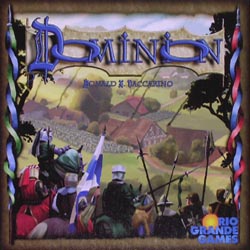 |
Wayback When? - October '93, '98, '03, '08 (5th October 2013 15:27)
Wayback When? is a review of the games I was playing five, ten, fifteen and twenty years ago with me highlighting the most memorable titles of each particular month in the vain hope that I might dig out some of them to play again. This month we’re looking at October 1993, 1998, 2003 and 2008.
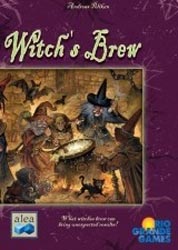 Â Â 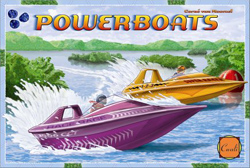 Â Â 
In October 2008, I was introduced to four great games for the first time. Witch's Brew is a nice card game with lots of second-guessing and groaning when someone pinches the role you wanted. Powerboats is an under-rated race game where dice control your speed but you have more control than in something like Formula De. And the ground-breaking Dominion arrived amid a mountain of hype - luckily the game lived up to the hype.
Five years earlier, I only got to play one game all month but that game was a good one: Martin Wallace's Liberte is based on the French Revolution with players trying to gain the most victory points while guarding against the possibility of the game ending early through a landslide election victory or a Royalist counter-revolution.
 Â Â  Â Â 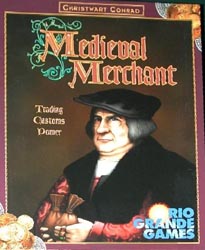
October 1998 saw my first trip to the Essen game fair, during which I managed to play the prototype of Ra from the new Alea game company. It was released the following Spring. A fantastic game which remains one of my favourites. Another Reiner Knizia game appeared in the form of Samurai, the thinky area control game. And Medieval Merchant also came out at Essen, a very nice economic game by Christwart Conrad.
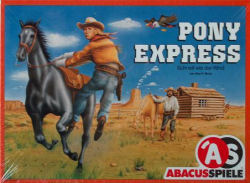 Â Â 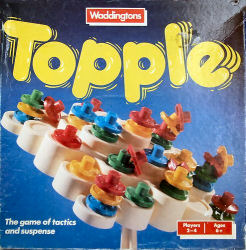
Finally, in October 1993, I played a couple of interesting but not top-notch games. Pony Express was an Alan Moon design about racing across a Wild West landscape and Topple was a light balancing game, the plastic equivalent of Zoch's wooden balancing games.
|
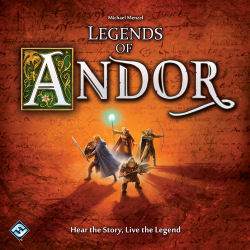 |
September 2013 roundup (1st October 2013 12:11)
September saw me play just 12 games of 10 different titles, 4 of which were new to me. The new games were Eight Minute Empire, Dungeon Roll, Sun Sea & Sand and Legends of Andor.
I added two new titles to the collection which were Dungeon Roll and Legends of Andor. My unplayed games list has shrunk by two to 29 this month and game of the month was a fairly easy call with the Kennerspiel des Jahres winning co-operative game Legends of Andor taking the trophy. |
 |
Wayback When? - September '93, '98, '03, '08 (4th September 2013 22:04)
Wayback When? is a review of the games I was playing five, ten, fifteen and twenty years ago with me highlighting the most memorable titles of each particular month in the vain hope that I might dig out some of them to play again. This month we’re looking at September 1993, 1998, 2003 and 2008.
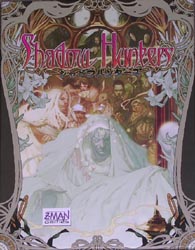 Â Â 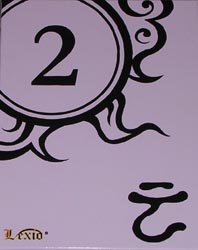 Â Â 
September 2008 saw the first outing for Shadow Hunters, a really fun game of hidden identities which is best played with a larger number of players. Great fun and one to dig out when I need a win to take the annual Hall of Fame title. This month, I also played the beautifully produced Lexio, which is a climbing game in the same mould as Tichu and The Great Dalmuti but comes with great chunky Bakelite tiles.
Five years earlier, we got to play I'm The Boss for the first time, a very unforgiving negotiation game. Although I've since sold my copy, it's still a fun game that we ought to dig out from time to time (Nige???)
  Â Â 
September 1998 was a good month for three excellent new games played. Basari is an extremely fun simultaneous action and set collection game designed by Reinhard Staupe (and remains his best design to date in my view); Schnappchen Jagd is a tricky Uwe Rosenberg card game that was re-published as Bargain Hunter; and David & Goliath is a fantastic trick taking card game designed by Reinhard Staupe (and remains his best ... card game design to date in my view).

Turning to 1993, September only saw me play one new game (to me) of note and that was Labyrinth, the clever tile sliding game where you try to clear a path to the treasure by sliding tiles around the labyrinth. |
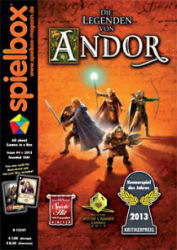 |
Spielbox #4/2013 (3rd September 2013 22:26)
And talking of Legends of Andor, it features on the cover of the new issue of Spielbox, which turned up the other day, by virtue of it being named Kennerspiel des Jahres (Enthusiast's Game of the Year). This issue includes reviews of Rialto, CO2, Le Havre: The Inland Port, Robinson Crusoe: Adventures on the Cursed Island and Potato Man (which I definitely need to obtain). It also includes various articles, the most interesting of which explains the relocation of the Essen Fair to Halls 1,2 and 3 during the refurbishment of the Messe. For the collectors out there, this issue also throws in a couple of Messenger cards for Last Will and a Damned card for Bruno Faidutti's new game, Mascarade.

|
 |
Legends of Andor (3rd September 2013 21:56)
Unexpectedly, a copy of Legends of Andor is on its way to me. A speculative order from the Foyles website in January, quoting a price of under £25 seemed like a good deal. However, after several months of it still being "On order", I expected it to have been cancelled. Seems I was wrong.

|
 |
August 2013 roundup (2nd September 2013 15:48)
In August, I managed to play 22 games of 19 different titles, 8 of which were new to me. The new games were Pictomania, Dixit, Hockey sur Table, Sushi Go, Lord of the Rings: The Fellowship of the Ring Deck-Building Game, Robinson Crusoe: Adventures on the Cursed Island, Trains and Bruges.
I added eleven new titles to the collection which were Hockey sur Table, Hey Waiter, Dungeon Twister: The Card Game, Mascarade, Robinson Crusoe: Adventures on the Cursed Island, Sushi Go, Eight Minute Empire, Trains, You Suck, Bruges and a review copy of Stak Bots. My unplayed games list has grown to 31 this month and game of the month was a close call with Bruges being the third Stefan Feld game to take the title this year. |
 |
Counter #62 (28th August 2013 22:03)
The new issue of Counter has just arrived and has had a cover re-design, as you can see from the image below. This issue runs to 84 pages and has lots of reviews including Bruges (the Z-Man English version of which arrived in the UK this week), Cinque Terre, Eight Minute Empire, Hooyah!, Oddville and Qwixx amongst many others. There are also several articles among which Rick Thornquist has a nineteen step guide (couldn't he really have made it twenty?) to teaching games and Kendall Johns gives a brief run-down of this year's UK Games Expo at its new location next to the Birmingham National Exhibition Centre.

|
 |
Review: Asara (26th August 2013 11:18)
What’s it all about?
Asara is a family game for 2-4 players, designed by Wolfgang Kramer and Michael Kiesling and published by Ravensburger. It is set in the Land of a Thousand Towers and players are competing architects who are seeking to build the most, highest and grandest towers in the land. They send buyers to the marketplace to acquire tower sections and workers to build the towers. At the end of each of four rounds, victory points are awarded and, at the end of the game, a final assessment is made to give further points to the architects who built the most and highest towers. The game takes 45-60 minutes to play.

What's in the box?
As you would expect from Ravensburger, the components are top quality. The octagonal board shows the market-place in Asara with different areas for the tower sections, a building circle where you hire workers to build the towers, a bank from which to gain more money, a house of spies and the Caliph’s residence. The tower pieces and money are sturdy cardboard tokens and each player has a cardboard screen behind which to hide their money and tower sections. There are 45 cards which depict the buyers and these come in five colours. Finally there are wooden score and round markers along with the rules and a separate set-up sheet.
How does it play?
The gameplay is very straightforward. Each player receives nine buyer cards and twenty coins at the start of each of the four rounds (slightly more in the first round for those not in first place in turn order). On a player’s turn, they lay a card into one area of the marketplace and execute the action associated with that area. Play then moves on to the next person in clockwise order and continues until everyone has used all their buyer cards. That ends the round and victory points are awarded.
If the card played is the first in a particular area, it can be any colour of the player’s choosing. However, subsequent cards in that area have to match the colour first played or you have to play two cards of any colour (which then reduces the number of actions you can do in a round as you’re left with fewer cards). Having played a card, you then carry out the action for the area in which the card was played. There are four tower areas from which to purchase tower sections. These are for bases, mid-sections, windows and turrets and the sections come in five different colours. The player selects which coloured section they wish to purchase, pay the cost in coins and place it behind their screen. The next area is the building circle. Here you pay between one and seven coins to hire workers to build your towers, one worker/coin for each section you wish to build. Towers have to have one base and one turret but can have any number of mid-sections and windows, and all sections have to be the same colour. If you are running low on coins, you can go to the bank area to raise more cash. First to visit the bank will get 12 coins, next 10 coins then 8 and any further visitors receive only five coins. You can also visit the House of Spies area. This allows you to bribe an official with 3 or 5 coins and you can then pick and pay for any tower section of your choice. The final area is the Caliph’s residence and going here gives you the Caliph’s patronage token, which makes you the start player for the next round and also rewards the owner with a victory point at the end of the round.
Once all players have used all their buyer cards, the round ends and there is a scoring phase. Each tower a player has built gives them one victory point; certain tower sections are marked with gold ornaments and each one of these earns one victory point; and the Caliph’s patronage yields the owner a victory point. The game then moves on to the next round. After the fourth round scoring, the game ends and a final evaluation takes place. Points are then awarded for the highest and second-highest towers in each colour; the highest and second-highest towers overall; the largest and second-largest number of towers overall; and for each remaining ten coins a player has. Whoever has accumulated the most points is then the winner.
What do I think?
Asara is a very enjoyable family game that is easy to learn, easy to play but has enough to think about to reward good play. I very much like the rule about cards needing to follow the colour first played in an area, as this gives some tactical opportunities to use colours you are strong in to select the more lucrative areas and make it more expensive for those who don’t have that colour. It isn’t going to suit gamers who like a lot of complexity, although it does come with additional rules to add two further elements to the game play. However, it isn’t meant to be a heavy game and is definitely aimed at those who like lighter stuff. The two-player version works well enough although there is less competition for space in the market-place so it is not quite as tense as with more players. With three or four, you really need to prioritise the order in which you visit the different areas in case a vital piece you needed has already been taken. All in all, I would definitely recommend this is an elegant and straightforward game suitable for families and game groups looking for a lighter sixty minute game. The fact that it was nominated for the German game of the year in 2011 is unsurprising because it is a very strong design and looks beautiful.
Note: I was provided with a review copy of the game. |
 |
The Cast Are Dice 2013 (7th August 2013 21:03)
This weekend is the annual games convention in Stoke-on-Trent, The Cast Are Dice. It runs from 10.00am-10.00pm on Saturday 10th August and 10.00am-8.00pm on Sunday 11th August at Stoke on Trent Sixth Form College ST4 2RU. All the details can be found here.
I'll only be there on the Saturday but am looking forward to the event as always. And Nick should have copies of Robinson Crusoe, Mascarade, Hey Waiter, and the Dungeon Twister Card Game for me to pick up. Anyone want to teach me Robinson Crusoe? |
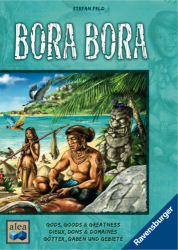 |
Review: Bora Bora (6th August 2013 22:29)
What’s it all about?
Bora Bora is a complex game for 2-4 players designed by Stefan Feld and published by Ravensburger (Alea). It is set on the Polynesian island of Bora Bora and players are trying to develop their society by exploring, building huts, fishing, collecting shells, praying in the temples and making offerings to the gods. It is typical of the designer as there are multiple strategies to explore and it is really just optimising how you gain the most victory points during the game.
What's in the box?
 The box is really heavy as there are a lot of components. There is a main player board depicting the island and lagoon of Bora Bora as well as a number of separate areas for the various tile displays, status and scoring tracks. There are individual player boards, the right half of which is used to track progress in the various tasks you are trying to achieve; while the left half gives a useful reminder of a number of elements of gameplay. There are wooden pieces in each player colour as well as wooden resources for sand, stone and wood. There is a deck of 60 god cards in five different varieties that are used to help players in achieving their objectives. And then there are over 250 cardboard tiles and tokens representing the various currencies and objectives the players are trying to achieve. These are nice and thick and beautifully illustrated. Oh, and last but not least there are three dice in each of the four player colours.
How does it play?
I’m not going to give a full run-down of the rules because it would take forever and I would point out that teaching these the first time is going to take quite a while – a full explanation could take twenty minutes or more – but that is because there is so much going on in the game. However, the gameplay is pretty straightforward once you understand the basics. You just have to appreciate that there are lots of options available to the players.
The game runs over six rounds and each round has three main phases: a Dice Action phase; a Man/Woman Action phase and a Resolution phase. The Dice Action phase is the key part of a round and involves players allocating their three dice to a five types of actions.
Firstly, you can expand and place a hut in a new area of Bora Bora. This can either be via land or sea and is limited by the number shown on the die allocated to this action. Expansion also yields a resource or an offering to the gods, plus an option to gather fish from the new area by using an appropriate offering/god card.
Secondly, you can recruit a Man or Woman tile, each of which gives you the opportunity to carry out a Man/Woman action in the second phase, as well as the ability to gain status points or shell tokens when you use a Helper action
Talking of which, a Helper action gives you, depending on the value of the die allocated to it, a choice of taking status points or shell tokens (from previously acquired Man/Woman tiles), victory points, offerings to the gods (which are the currency needed to play the sometimes vital God cards), resources (needed for constructing buildings), or clearing a hut from a space on your player board to enable you to recruit more Man/Woman tiles.
Fourthly, you can place a priest in the Temple area of the main player board. A higher dice allocated to this action will mean the priest is more likely to remain in play for longer and priests give you points and God tokens in the third phase of each round.
Finally, you can construct a building by surrendering the resources you have collected while expanding (the first dice action) and this will generate immediate victory points, with building in earlier rounds being rewarded by more points than building later on.
And that’s just the first phase – don’t worry, the other two phases are more straightforward. However, the clever part of the first phase is the way in which dice are allocated. The first player to allocate a die to a particular type of action can choose any value of die. However, anyone who subsequently wants to use the same action can only do so by playing a lower value die than the last one played to that action type. This makes for some interesting decisions where by playing a lower valued die to an action, you can freeze an opponent out of using that action. In extremis, I should also mention that, if you do get completely stuffed and can’t use a die for one of the main actions, there is a consolation action that just gives you 2 victory points for each die not used – not an action to be used by choice really.
Phase two of a round allows players who have collected Man/Woman tiles to use the actions of those tiles. Each round, a player can choose to use one Man action and one Woman action and these give a multitude of benefits – there are twelve different benefits depending on the tile acquired.
Then the final phase, the Resolution phase, involves four things to be resolved. The Status track gives victory points for progress along that track during the round. The Temple track gives victory points for each priest in the temple and a God token (a wild God card) to the person with most priests in the temple. Each player has the chance to buy a Jewelry tile by spending shells and these give victory points at the end of the game. Then, finally, each player has the option of completing a task tile. Players have three task tiles allocated to them at random at the start of the game and should work towards completing them through the other achievements they fulfil during the game. Fulfilling a Task tile gives victory points and a new task is chosen so the players always have three tasks they are working on.
After six rounds, there are some end-game bonuses and whoever has accumulated the most points is the winner.
What do I think?
Phew! There is definitely a lot going on in this game and it is not one I would recommend for the typical family gamer. It is a serious game and players need to think about the plethora of choices that confront them and try and work out a strategy they think will work. Not that there is one obvious dominant strategy to my mind. To an extent, you are forced to work with what the dice rolls present you and where you are in turn order. Although going first gives you an advantage for choosing your first action, if people have played low dice before it gets round to your next turn, that’s going to make life difficult, although certain God cards can help.
I’ve played the game with both two and four players and each worked very well. The Dice Actions available in the first phase are modified dependant on the number of players and this ensures that there is still enough tension in the two-player game although four-player leads to more crowding, particularly on the Temple track.
This is quite a long game so you need to be prepared to invest some time in it. Our first four player game took three hours and the two-player was well over ninety minutes, although familiarity will obviously bring the time down. That said, the game has so much going on and so much to think about that it doesn’t seem that long when playing. I think this is a great choice of game for the experienced game player who doesn’t mind the abstract nature of Eurogames. The theme works ok but, as with most Stefan Feld games, it is the mechanisms that make the game rather than the theme. However, I’m quite prepared to forgive lack of theming for what I consider to be a very solid and thought-provoking game
Note: I was provided with a review copy of the game. The box is really heavy as there are a lot of components. There is a main player board depicting the island and lagoon of Bora Bora as well as a number of separate areas for the various tile displays, status and scoring tracks. There are individual player boards, the right half of which is used to track progress in the various tasks you are trying to achieve; while the left half gives a useful reminder of a number of elements of gameplay. There are wooden pieces in each player colour as well as wooden resources for sand, stone and wood. There is a deck of 60 god cards in five different varieties that are used to help players in achieving their objectives. And then there are over 250 cardboard tiles and tokens representing the various currencies and objectives the players are trying to achieve. These are nice and thick and beautifully illustrated. Oh, and last but not least there are three dice in each of the four player colours.
How does it play?
I’m not going to give a full run-down of the rules because it would take forever and I would point out that teaching these the first time is going to take quite a while – a full explanation could take twenty minutes or more – but that is because there is so much going on in the game. However, the gameplay is pretty straightforward once you understand the basics. You just have to appreciate that there are lots of options available to the players.
The game runs over six rounds and each round has three main phases: a Dice Action phase; a Man/Woman Action phase and a Resolution phase. The Dice Action phase is the key part of a round and involves players allocating their three dice to a five types of actions.
Firstly, you can expand and place a hut in a new area of Bora Bora. This can either be via land or sea and is limited by the number shown on the die allocated to this action. Expansion also yields a resource or an offering to the gods, plus an option to gather fish from the new area by using an appropriate offering/god card.
Secondly, you can recruit a Man or Woman tile, each of which gives you the opportunity to carry out a Man/Woman action in the second phase, as well as the ability to gain status points or shell tokens when you use a Helper action
Talking of which, a Helper action gives you, depending on the value of the die allocated to it, a choice of taking status points or shell tokens (from previously acquired Man/Woman tiles), victory points, offerings to the gods (which are the currency needed to play the sometimes vital God cards), resources (needed for constructing buildings), or clearing a hut from a space on your player board to enable you to recruit more Man/Woman tiles.
Fourthly, you can place a priest in the Temple area of the main player board. A higher dice allocated to this action will mean the priest is more likely to remain in play for longer and priests give you points and God tokens in the third phase of each round.
Finally, you can construct a building by surrendering the resources you have collected while expanding (the first dice action) and this will generate immediate victory points, with building in earlier rounds being rewarded by more points than building later on.
And that’s just the first phase – don’t worry, the other two phases are more straightforward. However, the clever part of the first phase is the way in which dice are allocated. The first player to allocate a die to a particular type of action can choose any value of die. However, anyone who subsequently wants to use the same action can only do so by playing a lower value die than the last one played to that action type. This makes for some interesting decisions where by playing a lower valued die to an action, you can freeze an opponent out of using that action. In extremis, I should also mention that, if you do get completely stuffed and can’t use a die for one of the main actions, there is a consolation action that just gives you 2 victory points for each die not used – not an action to be used by choice really.
Phase two of a round allows players who have collected Man/Woman tiles to use the actions of those tiles. Each round, a player can choose to use one Man action and one Woman action and these give a multitude of benefits – there are twelve different benefits depending on the tile acquired.
Then the final phase, the Resolution phase, involves four things to be resolved. The Status track gives victory points for progress along that track during the round. The Temple track gives victory points for each priest in the temple and a God token (a wild God card) to the person with most priests in the temple. Each player has the chance to buy a Jewelry tile by spending shells and these give victory points at the end of the game. Then, finally, each player has the option of completing a task tile. Players have three task tiles allocated to them at random at the start of the game and should work towards completing them through the other achievements they fulfil during the game. Fulfilling a Task tile gives victory points and a new task is chosen so the players always have three tasks they are working on.
After six rounds, there are some end-game bonuses and whoever has accumulated the most points is the winner.
What do I think?
Phew! There is definitely a lot going on in this game and it is not one I would recommend for the typical family gamer. It is a serious game and players need to think about the plethora of choices that confront them and try and work out a strategy they think will work. Not that there is one obvious dominant strategy to my mind. To an extent, you are forced to work with what the dice rolls present you and where you are in turn order. Although going first gives you an advantage for choosing your first action, if people have played low dice before it gets round to your next turn, that’s going to make life difficult, although certain God cards can help.
I’ve played the game with both two and four players and each worked very well. The Dice Actions available in the first phase are modified dependant on the number of players and this ensures that there is still enough tension in the two-player game although four-player leads to more crowding, particularly on the Temple track.
This is quite a long game so you need to be prepared to invest some time in it. Our first four player game took three hours and the two-player was well over ninety minutes, although familiarity will obviously bring the time down. That said, the game has so much going on and so much to think about that it doesn’t seem that long when playing. I think this is a great choice of game for the experienced game player who doesn’t mind the abstract nature of Eurogames. The theme works ok but, as with most Stefan Feld games, it is the mechanisms that make the game rather than the theme. However, I’m quite prepared to forgive lack of theming for what I consider to be a very solid and thought-provoking game
Note: I was provided with a review copy of the game. |
 |
Wayback When? - August '93, '98, '03, '08 (3rd August 2013 10:27)
Wayback When? is a review of the games I was playing five, ten, fifteen and twenty years ago with me highlighting the most memorable titles of each particular month in the vain hope that I might dig out some of them to play again. This month we’re looking at August 1993, 1998, 2003 and 2008.
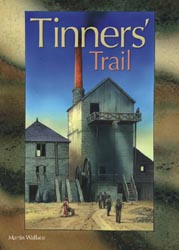 Â Â 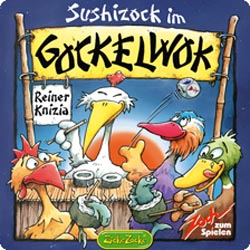 Â Â 
August 2008 saw me play a respectable eleven games during a traditionally slow holiday month. The two highlights were clearly Tinners' Trail, the Martin Wallace game about pasties and tin mining in Cornwall, and Sushizock im Gockelwock, Reiner Knizia's slightly more interesting dice roller from the same family as his earlier Pickomino.
2003 had a very poor August for game playing with only four recorded for the whole month. However, among these were the distinctly average Ad Acta and Cannes and the slightly better, but still not great, Crazy Race from Michael Schacht.
If 2003 was poor, 1998 was worse with absolutely nothing new played during a month when I only played five games.
 Â Â 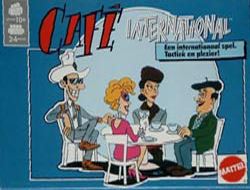 Â Â 
1993 was a much better month helped by attending the second of the short-lived Stakiscon conventions in Nottingham. Twenty games played during the month with a number of good new ones: $GREED was for a long time our go-to holiday dice game, Café International is a nice tile layer which won the Spiel des Jahres, Shark is a good business game reminiscent of but not quite as great as Acquire, and Tutanchamun is another of Reiner Knizia's clever set-collection games where you move down a path to collect the tiles you want but can never move back. |
 |
July 2013 roundup (1st August 2013 05:20)
In July, I managed to play 23 games of 20 different titles, 6 of which were new to me. The new games were The Manhattan Project, Dicht Dran, Legendary: Dark City, Space Hulk: Death Angel - The Card Game, The Hobbit: An Unexpected Journey and Diavolo.
I added ten new titles to the collection which were The Hobbit - An Unexpected Journey, Escape: Quest, Space Hulk: Death Angel - The Card Game, Oddville, Masques, Diavolo, Legendary: Dark City, Dicht Dran, Sonne und Mond and a review copy of Bora Bora that turned up on the last day of the month. My unplayed games list stands at 26 this month and game of the month was a close call with Space Hulk: Death Angel narrowly missing out to Legendary: Dark City.

|
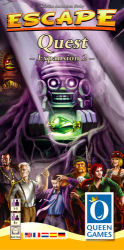 |
Another Great Escape (25th July 2013 19:58)
Arrived home today to find the final part of my Escape Kickstarter pack had arrived at last. This comprised a cloth bag to keep the game in (which is never going to get used) together with the second expansion for the game - Escape: Quest. This adds more chambers, a ghost meeple used in one of the chambers and some character tiles. I expect the expansion will be on general release in the next week or two.

|
 |
Holiday gaming - July 2013 (23rd July 2013 20:20)
Just back from a week in Gran Canaria with Jan, Cat and Becky. As usual, I managed to pack a few (14) games and we managed to play ten of them during the week. The games I packed but didn't play were Jaipur, Mystery Rummy: Murders in the Rue Morgue, Tien Zi Que and Keltis; Das Kartenspiel. However, we did manage:
Sunday: Drecksau, Clubs and Qwixx
Monday: Archaeology: The Card Game
Tuesday: The Hobbit Card Game, Love Letter and Space Hulk: Death Angel (solo)
Wednesday: Dominion: Intrigue
Thursday: Coloretto
Friday: Hanabi, Space Hulk: Death Angel (solo) |
 |
Now that's interesting! (9th July 2013 19:55)
I'm not sure how far this is down Ystari's development chain but I have to admit that when I saw this image I was intrigued as to what the Doctor might have in store for us this time. And Sebastian Bleasdale has done some good work recently, especially with Richard Breese on Keyflower.

|
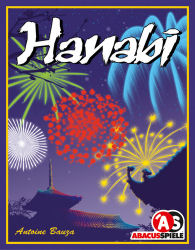 |
Spiel des Jahres - Winners announced (8th July 2013 11:42)
Well colour me surprised! And pleased that the SdJ jury chose the winner of this year's award to be Hanabi, deigned by Antoine Bauza and released by Abacus Spiele. Turning to the Kennerspiel des Jahres, this went to Legends of Andor, designed by Michael Menzel and published by Kosmos. Two co-operative games take the awards which is an interesting development. Admittedly, co-op games are becoming a lot more common than was the case ten years ago and they fit quite well with the aim of the award in promoting families getting together to play games. However, they are not to everyone's tastes although I am a fan of co-ops when they are done well. Hanabi is definitely one that is done well. I've not tried Legends of Andor so maybe it's time I tried it. Congratulations to the winners.
|
 |
Spiel des Jahres Announcement tomorrow (7th July 2013 14:27)
The winners of this year's Spiel des Jahres and Kennerspiel des Jahres are announced tomorrow, 8th July. If you recall, the nominees for the main award were Augustus, Hanabi and Qwixx and those for the KedJ were Brugge, Palaces of Carrara and Legends of Andor. So, what do I think will win?
Augustus and Legends of Andor are my picks. Although we didn't really rate Augustus as a six-player game when we played it, and I would love it if either Hanabi or Qwixx won, Augustus is the kind of big box game with expansion potential that the jury loves. As for the more complex game award, Andor looks good and a co-operative game would make a novel winner. Palaces is a game I would like to see win but nobody is giving this a chance whereas I've not yet played Brugge although I'm sure it's typical Stefan Feld so could be in with a chance. |
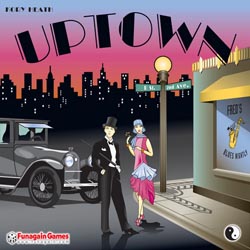 |
Wayback When? - July '93, '98, '03, '08 (2nd July 2013 20:32)
Wayback When? is a review of the games I was playing five, ten, fifteen and twenty years ago with me highlighting the most memorable titles of each particular month in the vain hope that I might dig out some of them to play again. This month we’re looking at July 1993, 1998, 2003 and 2008.
 
July 2008 was nearly as barren a month as June for game playing but, although I only played four games, two of those were the first plays for Agricola and Uptown. In 2003, I went one better in terms of total games played but the highlights were not as spectacular as in 2008. Blokus is a pretty good abstract, which we ought to try again soon, but Mammoth Hunters was a very forgettable game from the normally reliable publisher, Alea.
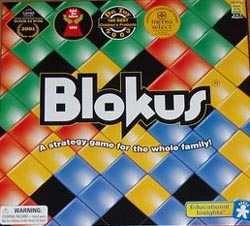 Â Â 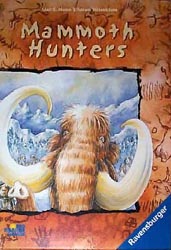
Fifteen years ago, the only new game I played in July was the fairly entertaining, Power, which I still have somewhere in a storage box - should I dig it out - while in 1993, I got to play the classic 6 Tage Rennen, a game I've never acquired but enjoy every time I play it.
 Â Â 
|
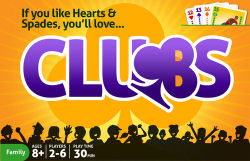 |
June 2013 roundup (1st July 2013 13:49)
In June, I managed to play 22 games of 17 different titles, 7 of which were new to me. The new games were Vineta, Wurfel Wurst, Jackal & High, Famous500, Augustus, Clubs, The Little Prince: Make Me a Planet, Terra Mystica and La Boca.
I added five new titles to the collection which were La Boca, Wurfel Wurst, Jackal & High, Clubs and The Little Prince: Make Me a Planet. I also sold 22 games during the month. My unplayed games list came down to 22 and game of the month was a tough choice between three (Terra Mystica, The Little Prince: Make Me a Planet and clubs). Although Terra Mystica is a fine game and others would certainly pick this, my choice is actually Clubs, a lovely climbing cardgame that works extremely well and will get played much more than TM.

|
 |
More Ebay delights (29th June 2013 11:02)
One day to go on some relisted Ebay items, many of them with reduced starting bids. How about Kramer & Kiesling's Der Schwarm (The Swarm), the brilliant party game, Time's Up, or Secret of Monte Cristo, with the innovative turn-order mechanism. The full list is here |
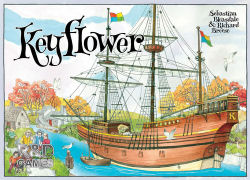 |
2012 Meeples' Choice Awards - The Winners (22nd June 2013 08:32)
Well after a week of voting, the Spielfrieks discussion group have finally chosen the winners of this year's award. These are:
- Terra Mystica (Jens Drogemuller & Helge Ostertag, Z-Man Games)
- Tzolk'in: The Mayan Calendar (Simone Luciani & Daniele Tascini, Rio Grande)
- Keyflower (Sebastian Bleasdale & Richard Breese, R&D Games)
All three are good games worthy of recognition even if I didn't vote for any of them. My three choices of Love Letter, Lords of Waterdeep and Snowdonia came in 4th, 5th and 6th respectively. Congratulations to the winners and thanks to Larry Levy for running it as usual. |
 |
2012 Meeples' Choice Awards - The Finalists (15th June 2013 11:05)
Well the Spielfrieks group has managed to whittle 200 games released during 2012 down to 24. From this set of games, voting will take place over the next week to select the three recipients of this year's award. The finalists are:
1812: The Invasion of Canada
Agricola: All Creatures Big and Small
Andean Abyss
Android: Netrunner
Clash of Cultures
CO2
Copycat
Edo
Escape: The Curse of the Temple
Ginkgopolis
Keyflower
Lords of Waterdeep
Love Letter
Myrmes
Nieuw Amsterdam
Pax Porfiriana
Seasons
Snowdonia
Star Wars: X-Wing Miniatures Game
Suburbia
Terra Mystica
The Manhattan Project
Trains
Tzolk'in: The Mayan Calendar
I'm pretty sure which games I'm voting for - two are very easy, the third just needs a bit more thought. I'll let you know what I've chosen once the results are announced. |
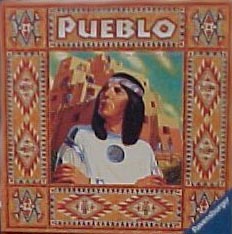 |
Latest Ebay listings (13th June 2013 19:17)
I've got 40 (count 'em, 40) games up for sale on ebay at the moment. The auctions end on 19th June and there are some interesting items: Pueblo, 1st & Goal, Perikles, A La Carte, Secret of Monte Cristo, Elasund: The First City and Time's Up to name but a few. The full list of games can be seen here. Happy bidding! |
 |
App-ricola (11th June 2013 21:48)
Agricola for the ipad is out this Thursday (13th). That is all. |
 |
The Little Prince: Make Me A Planet (9th June 2013 21:25)
Played Little Prince for the first time this evening and what a cracking game it is. Slightly different two-player which is how I played (with Rebecca) but I thought it a very nice interactive puzzle game. Each player is constructing a planet of twelve tiles with an additional four tiles at the corners of the 4x4 grid showing the scoring criteria for your planet. Each round, the active player draws tiles equal to the number of players, chooses one and decides who chooses next. The last player has no choice but becomes the active player for the next round. After all 16 tiles have been placed in the grid, you score and, whoever has the most points, wins. It doesn't sound overly different but I see it playing very tactically, with gamers selecting tiles (and the next player to play) just as much with a view of stuffing other players as much as helping themselves.
The two-player game has the active player picking three tiles, displaying two face up and the other face down, so the other player picks one and the active player takes one of the two remaining, discarding the final tile. Otherwise, the game plays the same, Very good and I'm very keen to play again.

|
 |
2012 Meeples' Choice Awards - Nomination Stage (8th June 2013 18:38)
It's time again for the Spielfrieks group to vote for the best games from the last 12 months. The first stage is to nominate ten from a list of the 200 most notable titles released in 2012. In my first pass through the list, I didn't even reach ten games that were definites. There were a few that ended up close to making the final ten (Divinare, Agricola: All Creatures Big & Small, Morels, Escape: Curse of the Temple) but my ten picks ended up being: Africana, Keyflower, Las Vegas, Lords of Waterdeep, Love Letter, Palaces of Carrara, Pax Porfiriana, Snowdonia, Targi and Tzolkin: The Mayan Calendar. |
 |
Kickstarter Euphoria (8th June 2013 09:59)
I don't back very much on Kickstarter as I'm not really interested in the "special extras" offered to Kickstarter backers. I did back Escape: Curse of the Temple which I was reasonably pleased with when it eventually turned up but part of that order (The Adventurer pack)Â is still to be delivered even though it was originally due in September 2012, I think. I am also awaiting Dungeon Roll, which I ordered on a whim, and this is due for delivery in August.
However, I have just backed Euphoria: Build a Better Dystopia, perhaps again lured by the hype, but this one does look interesting and, importantly, doesn't shove an extra $15-$20 on for delivery to Europe, which I find pushes most of the campaigns beyond my view of reasonable value (such as the Snowdonia reprint). Anyway, this one is promised before Christmas and the campaign has slightly exceeded its $15,000 target (currently $198,000 pledged with four days still to go). You can see more info here on the Kickstarter page. |
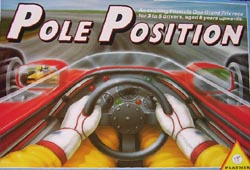 |
Wayback When? - June '93, '98,'03,'08 (7th June 2013 12:51)
Wayback When? is a review of the games I was playing five, ten, fifteen and twenty years ago with me highlighting the most memorable titles of each particular month in the vain hope that I might dig out some of them to play again. This month we’re looking at June 1993, 1998, 2003 and 2008.
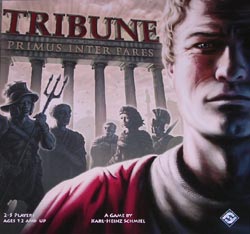 Â Â 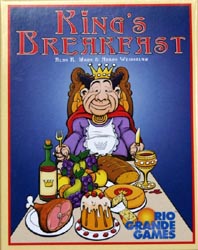
June is obviously a pretty barren month as in 2008 and 2003 I got to play three and two games in each month respectively. Tribune is a game that I really enjoyed but didn't go over too well the first time we played it as it seemed to finish really quickly and people got caught out by that. King's Breakfast is a fun card game from Alan Moon where you're trying to have a good breakfast but without eating quite as much as the King.
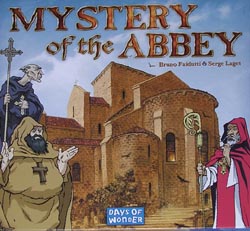 Â Â 
June 1998 wasn't quite so barren and it was the first time I got to play Bruno Faidutti's excellent vow of silence game, Mystery of the Abbey. Five years earlier, June 2003 saw me try a couple of interesting race games. Traber Derby Spiel was a precursor to Formula De but based on pony trap racing. Pole Position, however, is a wonderful game of negotiating an uncertain race track with lots of second-guessing what other players are going to do. |
 |
Princes, Jackals and Clubs (6th June 2013 20:57)
Two deliveries arrived today. One from Germany brought dice games Jackal & High and Wurfelwurst; mistakenly tipped for the Spiel des Jahres - La Boca; and cute (or evil, depending on your point of view) planet-building game Der Kleine Prinz: Meine Zuhause ist zu Klein. The other delivery was from Funagain Games in the US and contained Clubs, a traditional card game that is similar to Big Two, the Great Dalmuti and Tichu (albeit much simpler).

|
 |
Ragnar's Promised Land: 1250-587 BC (3rd June 2013 22:12)
The Ragnar Brothers have a new game out this year and they are promoting it via Kickstarter. The game is fully funded although the more money pledged, the more stretch goals can be accommodated. You have until 12th June if you are interested. I did see a demo version at UK Games Expo and it looks like a typical meaty Ragnar game. You can find more details out on the Kickstarter page. |
 |
May 2013 roundup (1st June 2013 11:00)
In May, I managed to play 17 games of 16 different titles, 5 of which were new to me. The new games were 5 vor 12, Dungeon Petz, Monopoly Millionaire Deal Card Game, Just in Time and Forbidden Desert.
I added seven new titles to the collection which were The Hobbit - An Unexpected Journey: Das Kartenspiel, Wettstreit der Baumeister, Furstenfeld, Forbidden Desert, Felinia, Giants and Augustus. My unplayed games list increased slightly to 24 this month and game of the month was a game I bought at Essen 2011 and only played for the first time this month: Dungeon Petz.

|
 |
Counter #61 (30th May 2013 21:51)
The latest issue of Counter, the first under the new management of Greg Schloesser and Ben Baldanza, landed on the doormat today. As you'll see from the picture below, the magazine has trimmed down a bit (not quite as wide as a standard A5 paper size, unless my copy got trimmed a bit more than it should have). However, the page count and content looks just as good as always. This issue has reviews of SdJ nominee, Augustus, as well as Bora Bora, CO2, Legendary: A Marvel Deck Building Game, Pax Porfiriana and lots of others. Subscriptions and further info is available here.

|
 |
A new Schacht (29th May 2013 19:32)
Well, after last weekend's little Feld joke, here's another. This, however, is only a slight joke in relation to the word "new". The Works has got some new games in and this includes Michael Schacht's Felinia (a 2010 release) which I've not played before. Jan had a look in the Shrewsbury branch today and... success! They had copies of this, Giants and Industry so she picked up the first two for me (as I already have the earlier 2003 version of Industry - Industria - also by Michael Schacht). Giants, like Felinia, is a game from publisher Matagot (although from 2008 this time) and looks very nicely produced. Hope to play them soon.
 
|
 |
A new Feld (25th May 2013 20:22)
I went along to the UK Games Expo this morning and, as I was wandering around, I spotted a Feld game that I didn't have and, even better, it was reduced in price from £49.99 to just £10.00. Now before Nige explodes in anticipation, I have to point out that this was not a Stefan Feld game; rather it was a Friedemann Friese game called Furstenfeld. This was released in 2010 but looks quite good - just not worth the £50 full price. I also picked up Forbidden Desert and the mini expansion to Key Flower. |
 |
UK Games Expo 2013 (23rd May 2013 19:02)
Just a reminder that UK Games Expo is this weekend. It takes place between 24th and 26th May at the NEC Hilton Metropole. The main show days are on the Saturday and Sunday but the Friday is reserved for playing games. All the details are on the Expo website. |
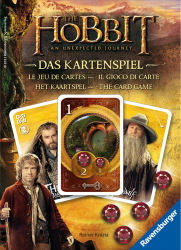 |
One new and one old game (22nd May 2013 20:18)
Came home to find two parcels had arrived for me today. The first was from Amazon and was a new Reiner Knizia game, The Hobbit: An Unexpected Journey - Das Kartenspiel. This is a refinement of King's Gate and ported to Middle Earth to tie in with the film. The second was a copy of Wettstreit der Baumeister, a 1998 Kosmos game from Jean du Poel, that I was reminded about when I was researching this month's Wayback When? I have fond memories of this. |
 |
Thoughts on the nominees (21st May 2013 20:28)
As usual, the Spiel des Jahres jury threw up some surprises in the choice of nominees for this year's awards. For the main award, the nominees were Qwixx, Hanabi and Augustus. This is really odd as two of the games are small box card / dice games and, as the aim of the award is to promote the industry, the SdJ logo is not going to show up very well on such a tiny box if Hanabi or Qwixx win. For this reason, I'll be astounded if Augustus doesn't win, added to which it seems the only one with expansion potential. I've played both Hanabi and Qwixx and they are both decent games. Hanabi is a clever design but needs the right group of people to make it shine. I'm not sure it's one for a typical German family. Qwixx fits the family game mode and is sort of a variant of Sid Sackson's Choice. It works quite well and is an interesting choice of nominee and I can understand why it got the nod as you can jump right into the game in a matter of a couple of minutes. Not played Augustus but the reports made it seem like a likely choice.
Turning to the Kennerspiel des Jahres nominees (Brugge, Palaces of Carrara and Legends of Andor), I expected a Stefan Feld game to be nominated but thought it likely that the more straightforward Rialto would be chosen. Nige suggested Bora Bora, which I thought too heavy, so the jury instead picked Brugge which I think falls between the two. I've not played the game yet but look forward to the Z-Man English release in a couple of months. Palaces of Carrara is a game that I rate very highly so I'm not at all upset to see it nominated but it is a bit of a throwback to designs of ten years or so ago, hence I expected it to be overlooked. More fool me. Legends of Andor is a fairly decent choice as it is a co-operative game with multiple scenarios that ease the players into the full rules stage by stage. Could be good but I've not played it although the recent video run-through by the folks at BGG didn't really grab me.
On the recommended list, I wasn't surprised to see Tzolkin appear but was glad Terra Mystica also get recognition. Mark K has a copy on order so I'm keen to see what it's like. There is some nice variety in the games chosen and those that I've played (Rondo, Riff Raff, Escape, Divinare and Libertalia) are all worthy of appearing. La Boca seems to have been many people's favourite to win and also looks a solid game although I'm not sure about replayability. Yay! (a dexterity dice game), Mixtour (a two-player abstract) and Hand aufs Herz (a party game) I have no idea about as I've not played them but I had never even heard of them until this morning so interpret that as you like.
The winners of both awards are announced on 8th July. |
 |
And the nominees are.... (21st May 2013 08:16)
The jury of the Spiel des Jahres have decided the shortlist for this year's award should be Qwixx, Augustus and Hanabi.
Meanwhile the Kennerspiel des Jahres (gamer's games) nominees are Legends of Andor, Palaces of Carrara and Brugge.
The list of recommended games is Riff Raff, Rondo, Yay!, La Boca, Escape, Mixtour, Hand aufs Herz, Divinare, Libertalia, Terra Mystica and Tzolkin.
Some surprising choices as usual. I'll give some thoughts on the list this evening. |
 |
Predicting the Spiel des Jahres Nominees (20th May 2013 20:47)
The SdJ jury announces tomorrow the nominees for the Spiel des Jahres and Kennerspiel des Jahres. I don't have much idea this year as there are several key contenders I've not played but here are my predictions (probably way off the mark):
SdJ nominees - La Boca, Escape: The Curse of the Temple, Smash Up
KedJ nominees - Rialto, Tzolkin: The Mayan Calendar, Libertalia
Recommended list - Saint Malo, Rondo, Wurfel Bohnanza, Hanabi, Star Wars: Angriff der Klonkrieger, Spectaculum, Tokaido, Legends of Andor, Farmerama, Palaces of Carrara. |
 |
Notre Dame (19th May 2013 18:52)
Played a good two player game of Notre Dame last night. Works really well with two and finished well within an hour even though it was Jan's first play. Sad to say, she beat me 50-40 as she made good use of the VP-generating area (the Residence), while I had one or two problems controlling rats. |
 |
Review: Just in Time (16th May 2013 20:29)
Just in Time is a competitive puzzle game designed by Gunther Burkhardt and published by Ravensburger. It is in the same mould as Ubongo and FITS (the latter also a Ravensburger game) but is different enough that fans of this type of game should give it a try.

What's in the box?
The game comes with 52 pentomino plastic tiles, thirteen each in four different player colours and 40 game boards (four sets of ten identical boards in the player colours). Then there are 27 challenge cards, nine of each showing three, four or five different shaped pentominos, plus a scoring track and a 30 second sand timer. The plastic tiles are of good quality but the game boards, cards and scoring track are made of fairly thin coated card rather than being the thick cardboard tiles I had expected. I don't think it affects gameplay or how long they'll stand up to repeated play but it may come as a slight surprise based on the usual quality of Ravensburger's components.
How does it play?
The game is played over ten rounds with players in each round using the same game board. Each board is rated 3,4 or 5 and this illustrates how many pentominos must be placed within a grid of multiple squares set out in a particular shape. Some of the squares in the grid also display a number. A challenge card of a number matching the board rating is turned over and this indicates which pentominos the players must use for this board. One player shouts "Go" and players try to fit all the pentominos into the grid, while trying not to cover number squares if they can. Once a player has done this, they shout out the sum of uncovered numbers in their grid and everyone else has 30 seconds to complete their grid but they are not allowed to leave the same sum of uncovered numbers as those players that manage to finish and shout their scores before them. Once time has run out, anyone who didn't complete their grid fails to score and everyone else scores the sum of their uncovered numbers. This is repeated over ten rounds and whoever then has the highest score is the winner.
What do I think?
This is a pretty typical puzzle game and often there will be players that can easily visualise a solution and those that cannot. This makes for a dull experience for those that fall into the latter group. However, there is a catch up rule that I've not mentioned yet and this does help to level the playing field a bit. If, at the end of a round, you are ten or more points behind the leader's score, you get to use a smaller square tile as a replacement for an awkward shaped tile. This does make the puzzle quite a bit easier and can put the pressure on other players if you're able to quickly solve a grid. This ought to ensure people stay in reasonable contention throughout the game, although the more spatially aware players are still more likely to win.
Just in Time is a good addition to the puzzle type game but it's not a great addition. There are other games I would probably choose before this, such as FITS or Take It Easy, but for those who are hooked on this type of game, it does make an interesting change and the race element does make it quite tense. It is a very straightforward game so easy to play with the family or occasional gamers. It's probably not one to play with hardened gamers though.
Note: I was provided with a review copy of the game. |
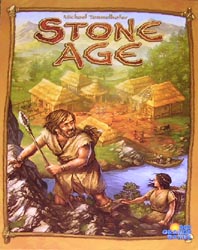 |
Wayback When? - May '93, '98, '03, '08 (3rd May 2013 16:52)
Wayback When? is a review of the games I was playing five, ten, fifteen and twenty years ago with me highlighting the most memorable titles of each particular month in the vain hope that I might dig out some of them to play again. This month we’re looking at May 1993, 1998, 2003 and 2008.
 Â Â 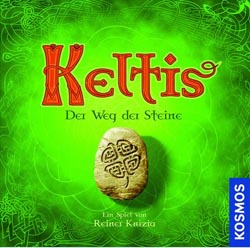
May 2008 saw the first play of Stone Age, one of the very best worker placement games (is it really five years old?). It very much hits the sweet spot for me and should definitely be played more often than it does. Also, this month, we got to play Keltis, Reiner Knizia's first attempt to change Lost Cities into a multi-player board game.
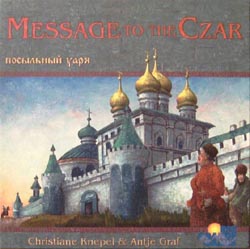
I only got to play four games during the month of May 2003 and this was the only new game I played. It wasn't that good.
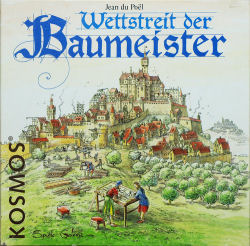 Â Â 
May 1998: I again only played four games in this month but this time, they included two corkers. Wettstreit der Baumeister was a fun game about building castles whereas Durch die Wuste (or Through the Desert) was Reiner Knizia's 'Go'-like tile laying game. I think Nige bought my copy from me quite recently.
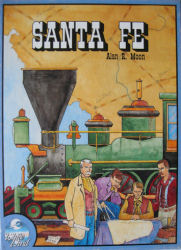 Â Â 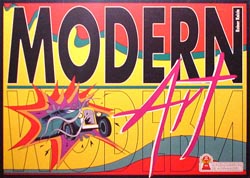 Â Â 
Twenty years ago saw me play Alan Moon's Santa Fe and Reiner Knizia's Modern Art for the first time. It also saw my first trip to Beer & Pretzels in Burton on Trent, which provided me with my one and only experience of 1830 - 7 hours was enough 18XX for me to last a lifetime. |
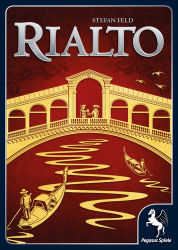 |
April 2013 roundup (2nd May 2013 16:16)
April saw me play 24 games of 21 different titles, 11 of which were new to me. The new games were Rialto, Skull & Roses, Cinque Terre, Kreuz & Quer, Ghooost! Ginkgopolis, King of Tokyo: Power Up, Mice & Mystics, Qwixx, Shadows Over Camelot: The Card Game and Tokaido.
I added nine new titles to the collection which were Those Pesky Garden Gnomes, 5 vor 12, Kreuz & Quer, Qwixx, Rialto, Skull & Roses, Cinque Terre, Casa Grande and Just in Time. The last two of these, however, were review copies that I received alongside Castles of Burgundy. My unplayed games list reduced by 1 to 23 this month and game of the month was a very easy decision this time as Rialto was a clear winner and could be my favourite game of the year so far.

|
 |
Review: The Castles of Burgundy (1st May 2013 20:57)
The Castles of Burgundy is a very challenging and fun strategy game for 2-4 players, designed by Stefan Feld and published by Alea / Ravensburger. It was originally released in 2011 in Germany but is now widely available in a multi-lingual edition.
The game is set in the Loire Valley and each player represents a prince trying to lead their estates to prominence by developing sections of the estate towards trade on the river, farming, mining, constructing valuable buildings or castles and developing scientific knowledge. Whoever best develops their estate is the winner.
The game is played over five phases each of which is made up of five rounds. In each round, every player takes a turn in which they can conduct two actions, meaning everyone gets 25 turns or 50 actions. The game has a central board which contains the stuff players can use in each phase as well as tracking the order in which players take turns, how the game is progressing through the rounds and phases, and a score track for showing how well the players are doing. In addition, each player has their own player board, representing their estate, and onto which they are going to place the castles, buildings, pastures, mines etc. that will build up their prestige (or score).
Each round the players will roll two dice each and in turn order, players will pick one of their dice and use it for one of four types of action:
- Take an estate tile from the central gameboard and put it in their warehouse;
- Place a tile from their warehouse onto their individual board, carrying out the benefit associated with the tile they placed;
- Sell one type of good from their goods shipping area, receiving victory points for each good sold; or
- Recruiting two workers, which enable you to manipulate the dice you roll.
This last action doesn't directly advance your standing in the game but is important because the numbers on the dice you roll restrict how you carry out the other actions: estate tiles on the central board are spread over six numbered areas and you can only take a tile from the area shown on your die; the spaces in your estate are numbered 1-6 and you can only place a tile in the right numbered space; and each goods type is numbered 1-6 and you can only sell the type matching number on your die. Hence, having workers to change the dice results is pretty important.
There are several other details that add to the richness of the game but the above description gives you the main idea. Obviously, whoever has generated the most points over the course of the game can claim to be the most influential prince and the winner.
So what do I think?
There is a lot going on in this game. When you start to play, you may feel overwhelmed by the myriad of choices you've got. However, in some ways, this helps ease the players into the game because there are lots of ways to make your estate better and whatever you do will move you forward. As you move into the second and third phase, you'll start to see how each of the elements work together and can hone in on what you think will work best. That's not to say that your early decisions are meaningless, as an experienced player will get more out of those early turns and build on the advantage they gain. However, the dice bring an element of fortune into the game and a good start doesn't necessarily guarantee a good result, particularly if you haven't got workers to enable you to manipulate the dice results.
The game seems to scale very well between two and four players, as the number of tiles made available at the beginning of each phase varies based on the number of players. The box suggests the game takes between 30 and 90 minutes to play, less time with fewer players, but I would expect the first time you play to take longer as you try to come to grips with what you're trying to do. In addition, if you're playing with opponents who like to over-analyse all the options they have, that will make the game last longer.
Overall, this is a very good choice for someone looking for a game requiring a fair amount of thought and foresight and I enjoy it a lot. It is easy enough to play - roll two dice and pick from four actions - but it's not easy to play well. You do need to think about what you're trying to achieve so don't choose this if you're wanting to play something without some degree of concentration. I would recommend it for two, three or four players looking for a clever strategy game.
Disclaimer: I was supplied with an English review copy of the game although I had already played and own a copy of the original German release. |
 |
Telford Mini-Con 2013 (15th April 2013 21:59)
Coming up on Saturday 20th April 2013 is the annual Telford mini-con in Shifnal. The event starts at 10.00am and finishes at around 10.00pm. The location is Shifnal Village Hall, Aston Street, Shifnal, Telford TF11 8DW. There is ample free parking next to the hall and the railway station is just a short walk away. More details can be found here. |
 |
Rialto (15th April 2013 19:17)
With a bit of luck, the second of Stefan Feld's releases this year should be with me by Friday. |
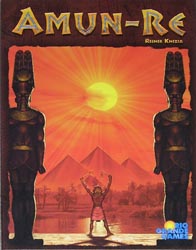 |
Wayback When? - April '93, '98, '03, '08 (3rd April 2013 20:58)
Wayback When? is a review of the games I was playing five, ten, fifteen and twenty years ago with me highlighting the most memorable titles of each particular month in the vain hope that I might dig out some of them to play again. This month we're looking at April 1993, 1998, 2003 and 2008.
 Â Â  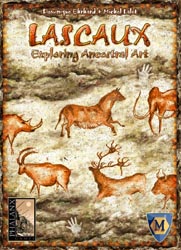
April 2008 saw the first appearance of three interesting games. Perikles was a very approachable Martin Wallace game; Glory to Rome was another clever multi-purpose cards type game in the same vein as San Juan and Race for the Galaxy; Lascaux was a neat card game that I can't quite remember how it played but everyone thought it was pretty good.
 Â Â 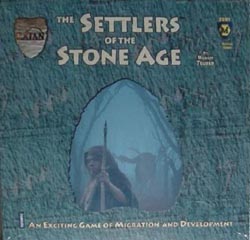
Ten years ago saw us play one of Reiner Knizia's all-too-rare these days gamer's games, Amun Re, an excellent game that really does need to get played again soon. Also that month, Settlers of the Stone Age was a nice addition to the Catan universe where everyone expands out from Africa into Europe, Asia and the Americas, while the original African areas get turned into deserts. An interesting twist.
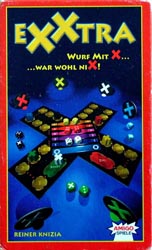 Â Â 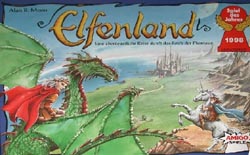
April 1998 saw the release of one of Reiner Knizia's earliest dice games and Exxtra (also published as Excape) remains a fun push your luck game. Also, Alan Moon's reimplementation of Elfenroads, the Spiel des Jahres winning Elfenland was played for the first time.
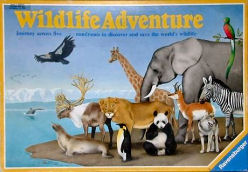 Â Â 
Finally, in April 1993, I was introduced to the classic Wildlife Adventure, a game that is currently going through a Kickstarter campaign for re-publication, and the clever election card game, Koalition. |
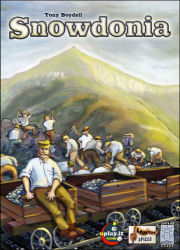 |
March 2013 roundup (2nd April 2013 20:26)
In March, I managed to play 27 games of 17 different titles, 8 of which were new to me. The new games were Tournay, Spectaculum, Snowdonia, Snake Oil, DC Comics Deck-Building Game, Coup, Star Wars: Angriff der Klonkrieger and Legendary: A Marvel Deck-Building Game.
I added seven new titles to the collection which were Ghooost! Kairo, The Manhattan Project, Sun Sea & Sand, Snake Oil, Star Wars: Angriff der Klonkrieger and Legendary: A Marvel Deck-Building Game. The last of these was my most played game of the month with seven outings. My unplayed games list increased slightly to 24 this month and game of the month could have been Legendary but actually turned out to be Tony Boydell's Snowdonia, a game I really should have picked up at lst year's Essen in hindsight.

|
 |
Wayback When? March '93, '98, '03, '08 (3rd March 2013 21:41)
Wayback When? is a review of the games I was playing five, ten, fifteen and twenty years ago with me highlighting the most memorable titles of each particular month in the vain hope that I might dig out some of them to play again. This month we're looking at March 1993, 1998, 2003 and 2008.

March 2008 was a very poor month for games as I only played two titles all month. Utopia was the only new game, a very nicely presented game but it didn't quite hit the mark and I've recently sold it.
 Â Â 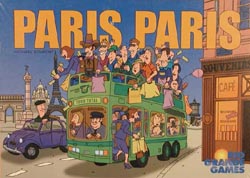 Â Â 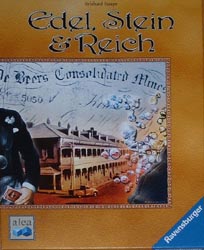
Conversely, March 2003 was a very good month with several interesting titles being played: New England, Friedemann Friese's brain melting Fresh Fish, Michael Schacht's Paris Paris and the card game version of Basari entitled Edel Stein & Reich.
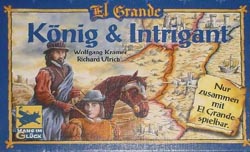
March 1998 only saw one item of note but a good one it was: The Konig & Intrigant expansion to El Grande brought each player a deck of action cards from which they chose one in each round of play.
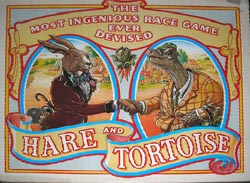 Â Â 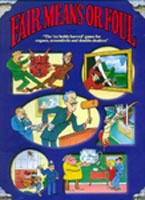 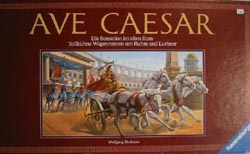
March 1993 saw my education about German games blossom further with Hare & Tortoise, Adel Verpflichtet (aka Fair Means or Foul), Ave Caesar and Alan Moon's Elfenroads. I think I was hooked by this time. |
 |
Last call for bids (2nd March 2013 00:22)
Another batch of games on Ebay where the auctions are due to end on Sunday afternoon. This time, the games on offer include Ticket To Ride: The Card Game, Carcassonne: Die Burg (The Castle), Pergamemnon, Time's Up and Demarrage, among others. You can see the full list here. |
 |
February 2013 roundup (28th February 2013 21:55)
Gaming in February saw me play 18 games of 15 different titles, 5 of which were new to me. The new games were Bezzerwizzer, Thebes: The Tomb Raiders, Bora Bora, Famous Forehand and Construction Zone.
I added six new titles to the collection and sold twenty three. The new additions were A Fool's Fortune, Thebes: The Tomb Raiders, Coup, Famous Forehand, Famous 500 and Mice & Mystics. My unplayed games list increased slightly to 23 this month and game of the month was a close call between two games. In the end, Pax Porfiriana just lost out to the new Stefan Feld game, Bora Bora.

|
 |
Another batch of Ebay games ending tomorrow (16th February 2013 23:35)
I have another batch of games on Ebay where the auction ends tomorrow. Perikles, Poseidon's Kingdom, Sorry Sliders, Colosseum and lots more avaialble. Full details here. |
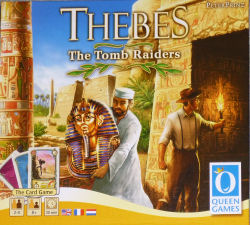 |
Thebes: The Tomb Raiders (7th February 2013 23:09)
Thebes: The Tomb Raiders is a card game version of Jenseits von Theben (or Thebes, in English) the boardgame, both published by Queen Games. This is a brief write-up of how the game plays after one three-player session. I’m assuming some familiarity with the boardgame but hopefully it will be understandable to someone who hasn’t played before. The players are archaeologists who are gaining knowledge about four archaeological sites with a view to conducting excavations at the sites to gain treasure, which can then be displayed at exhibitions or sold to museums. Each of these gain you VPs as does making speeches (congresses) about your expeditions.
 The game comes with a small board, the main purpose of which is to show the time track, reflecting the amount of time you spend researching, excavating, exhibiting etc. It also has spaces on which the various card types should be placed. There are 168 small game cards, 22 large excavation permits, four excavation charts to show how many artifact cards you can draw when you excavate, based on your level of knowledge and how long you commit to the dig; four time markers and a couple of help cards showing the distribution of of artifacts at each excavation site.
Players start with one excavation permit for each site plus one wild permit in a four player game (slightly different set-up with fewer players) and this limits the number of times you can dig unless you are able to acquire extra permits during the game. The small game cards are a mix of artifact cards in four colours (each colour representing a different site); expertise cards (books of knowledge about the four sites); exhibition and museum cards (which you can claim if you have the right combination of artifacts); professor cards (which give an end-game bonus to whoever has the most knowledge about each site or overall); congress cards (giving end-game points based on the number of congress cards you have collected); and action cards which can be played to give a one-off benefit.
With the exception of the five professor cards, the remaining 163 cards are shuffled into one large draw pile and cards are played to the board. Artifact, exhibition and museum cards are played to their relevant spaces as they are drawn and as soon as there are four expertise or action cards in play (placed on the four storage spaces in the centre of the board), the game begins.
A player’s turn consists of taking one action: Take a card, play an action card from your hand, or conduct an excavation. These actions will consume time and you move your time marker the number of weeks forward indicated by the particular option you choose. As in the board game, the person who is furthest behind on the time track takes turns until they overtake the person who is directly in front of them.
Early on, you’ll be taking cards from the storage spaces to build up your knowledge or to gain action cards for later use. Knowledge is placed face-up in front of you; action cards held in your hand until you choose to play them. Storage spaces are refilled at the end of your turn but, as the deck contains artifacts, exhibitions and museums (which are played to their relevant spaces), several cards may be drawn before the storage space is refilled.
Once you’ve got sufficient knowledge about a particular site (colour), you can launch an excavation. This involves cross-referencing the amount of knowledge you have with the number of weeks you wish to dig for, to determine how many cards you can look at from that particular site. If I have 5 red knowledge and I want to dig for 5 weeks, I can look at 3 red artifact cards. If these show treasure, I keep the card; if they show rubble, I’m unlucky and return the rubble to the relevant coloured artefact pile. The more knowledge you have and the longer you dig for, the more cards you get to look at. Importantly, the sites may start with no artifact cards, as they are drawn progressively from the draw pile so you need to judge how long to wait before you launch an excavation and you’ll only get to visit each site once or twice unless you pick up action cards that allow an additional excavation.
There are five types of action cards and these are played from your hand instead of taking a card or launching an excavation and cost an amount of time specified on the card. The General Excavation Card allows a further excavation at any of the four different sites; the Scientist allows you to look at all the artifact cards of a particular colour; the Assistant gives you an additional knowledge point for an excavation; the Thief allows you to take one artifact card at random from the colour matching the Thief Card; and the Tomb Raider allows you to pick an artifact card of your choice from the colour excavation matching the Raider card.
Once you’ve got a selection of artifacts, you can claim as a Take a card action an Exhibition card matching the combination of coloured artifacts you have. You can also get rid of low valued artifacts for higher valued Museum cards, again as a Take a card action. Professor cards can be immediately taken once you have at least four knowledge for a particular excavation, or one professor is awarded once someone has ten knowledge overall. However, if someone overtakes your knowledge level, they steal the Professor card.
The game ends as soon as the draw pile is exhausted. A player’s score is then the sum of the points shown on his artifact cards, Exhibitions, Museums, Professors and Congresses (these give points based on the number of congress cards you possess: 1, 3, 6, 10, 15, 21 or 28 if you have all seven). You also get 1 point for every three weeks less time you spent than the player who spent most. Highest total wins with ties broken by least time spent.
The box says the game takes around 30 minutes. That would be quite a challenge in my view. Our first attempt took 90 minutes after the rule explanation. The game comes with a small board, the main purpose of which is to show the time track, reflecting the amount of time you spend researching, excavating, exhibiting etc. It also has spaces on which the various card types should be placed. There are 168 small game cards, 22 large excavation permits, four excavation charts to show how many artifact cards you can draw when you excavate, based on your level of knowledge and how long you commit to the dig; four time markers and a couple of help cards showing the distribution of of artifacts at each excavation site.
Players start with one excavation permit for each site plus one wild permit in a four player game (slightly different set-up with fewer players) and this limits the number of times you can dig unless you are able to acquire extra permits during the game. The small game cards are a mix of artifact cards in four colours (each colour representing a different site); expertise cards (books of knowledge about the four sites); exhibition and museum cards (which you can claim if you have the right combination of artifacts); professor cards (which give an end-game bonus to whoever has the most knowledge about each site or overall); congress cards (giving end-game points based on the number of congress cards you have collected); and action cards which can be played to give a one-off benefit.
With the exception of the five professor cards, the remaining 163 cards are shuffled into one large draw pile and cards are played to the board. Artifact, exhibition and museum cards are played to their relevant spaces as they are drawn and as soon as there are four expertise or action cards in play (placed on the four storage spaces in the centre of the board), the game begins.
A player’s turn consists of taking one action: Take a card, play an action card from your hand, or conduct an excavation. These actions will consume time and you move your time marker the number of weeks forward indicated by the particular option you choose. As in the board game, the person who is furthest behind on the time track takes turns until they overtake the person who is directly in front of them.
Early on, you’ll be taking cards from the storage spaces to build up your knowledge or to gain action cards for later use. Knowledge is placed face-up in front of you; action cards held in your hand until you choose to play them. Storage spaces are refilled at the end of your turn but, as the deck contains artifacts, exhibitions and museums (which are played to their relevant spaces), several cards may be drawn before the storage space is refilled.
Once you’ve got sufficient knowledge about a particular site (colour), you can launch an excavation. This involves cross-referencing the amount of knowledge you have with the number of weeks you wish to dig for, to determine how many cards you can look at from that particular site. If I have 5 red knowledge and I want to dig for 5 weeks, I can look at 3 red artifact cards. If these show treasure, I keep the card; if they show rubble, I’m unlucky and return the rubble to the relevant coloured artefact pile. The more knowledge you have and the longer you dig for, the more cards you get to look at. Importantly, the sites may start with no artifact cards, as they are drawn progressively from the draw pile so you need to judge how long to wait before you launch an excavation and you’ll only get to visit each site once or twice unless you pick up action cards that allow an additional excavation.
There are five types of action cards and these are played from your hand instead of taking a card or launching an excavation and cost an amount of time specified on the card. The General Excavation Card allows a further excavation at any of the four different sites; the Scientist allows you to look at all the artifact cards of a particular colour; the Assistant gives you an additional knowledge point for an excavation; the Thief allows you to take one artifact card at random from the colour matching the Thief Card; and the Tomb Raider allows you to pick an artifact card of your choice from the colour excavation matching the Raider card.
Once you’ve got a selection of artifacts, you can claim as a Take a card action an Exhibition card matching the combination of coloured artifacts you have. You can also get rid of low valued artifacts for higher valued Museum cards, again as a Take a card action. Professor cards can be immediately taken once you have at least four knowledge for a particular excavation, or one professor is awarded once someone has ten knowledge overall. However, if someone overtakes your knowledge level, they steal the Professor card.
The game ends as soon as the draw pile is exhausted. A player’s score is then the sum of the points shown on his artifact cards, Exhibitions, Museums, Professors and Congresses (these give points based on the number of congress cards you possess: 1, 3, 6, 10, 15, 21 or 28 if you have all seven). You also get 1 point for every three weeks less time you spent than the player who spent most. Highest total wins with ties broken by least time spent.
The box says the game takes around 30 minutes. That would be quite a challenge in my view. Our first attempt took 90 minutes after the rule explanation. |
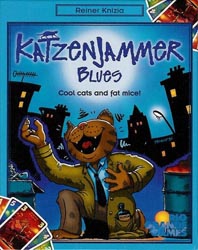 |
Wayback When February '93, '98, '03, '08 (3rd February 2013 22:47)
As I mentioned last month, February 1993 saw my first visit to the Nottingham & Derby Boardgames Club and there were two games played at that first session that really opened my eyes and got me into boardgaming. Those two games were Liar's Dice and Acquire. So, what were the stand-out games from February 2008, 2003, 1998 and 1993:
 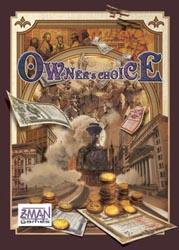
2008: Pandemic got its first play this month. This brilliant co-operative game about ridding the world of four virulent diseases before they get out of control remains as good today as it did in 2008 - and there's a new version out this year. Owner's Choice is the only other game that struck me as fairly innovative this month, a game where you can really be nasty to other players.
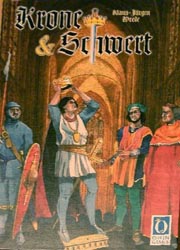
2003: Not much this month although Klaus Jurgen Wrede's Krone & Schwert was an interesting departure from Carcassonne, although I sold the game some years ago.
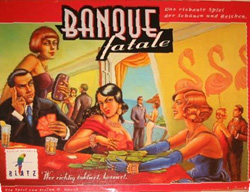 Â Â 
1998: Fifteen years ago, Banque Fatale was a nice light betting game by Stefan Dorra and Katzenjammer Blues was one of Reiner Knizia's great little card games that he released at that time. Not played it for years but I'm sure it still holds up well today.
 Â Â 
1993: As well as Liar's Dice and Acquire, my first month at the games club also introduced me to the original Airlines and the classic race game Speed Circuit. |
 |
January 2013 roundup (1st February 2013 13:34)
In January, I played 23 games of 19 different titles, 9 of which were new to me. The new games were Rory's Story Cubes, Keyflower, Sherlock Holmes Consulting Detective, Around the World in 80 Days, Copycat, Pax Porfiriana, Saint Malo, Boggle Slam and Cluedo Suspect.
I added five new titles to the collection and sold four. The new additions were Pax Porfiriana, Cluedo Suspect, Boggle Slam, Monopoly Millionaire Deal Card Game and Battleship: Hidden Threat. My unplayed list dropped to 20 games and my choice for game of the month was Sherlock Holmes Consulting Detective, although Pax Porfiriana may have taken it if I'd played a multi-player game (maybe this month). |
 |
Latest batch of games on Ebay (30th January 2013 19:03)
I've sorted out about a hundred games to sell on Ebay and the first batch of twenty five or so is currently listed with the auctions due to close on Sunday. Included in this lot are items such as the Lamont Brothers' anthil game, Antics, some imported games from the last couple of years like Asteroyds, Snapshot and Mondo, the highly regarded Brewster's Millions rip-off, Last Will, and many others. The full list is here. |
 |
Stefan Feld's quest to bankrupt Nige (28th January 2013 21:19)
In our game group, Nige has become a bit of a Stefan Feld fanboy (and who can blame him really based on Feld's recent output). However, this year this prolific designer has so far got not one, not two, not three but FOUR big game releases lined up already. Rialto, Bora Bora and Brugge have today been joined by an announcement from Queen Games of the impending release in October of Amerigo. Boardgamegeek News has all the details. Start saving now Nige.

|
 |
Wayback When? (3rd January 2013 20:43)
One of the good things about logging the games you play is that you can look back and see what you were playing in years past. Come next month, I will have twenty years' worth of games club sessions (from both Nottingham and Shrewsbury clubs ) recorded on BGG so I thought I'd look back each month and see what were the standout games five, ten, fifteen and twenty years ago.
So, to kick us off, let's look back to January 2008, 2003 and 1998, where the highlights were:
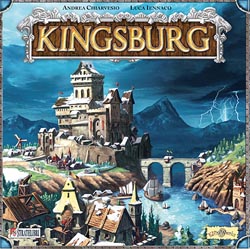 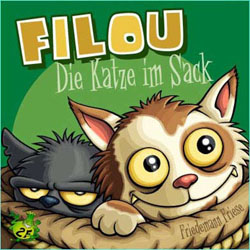
2008: Kingsburg is an excellent game and I can't believe it's over five years since it came out. A fairly innovative dice game for its time and I'm still enthusiastic to play it. Felix - The Cat in the Sack is an evil little card game from Friedemann Friese and, in my view, doesn't get enough love from our game group. Another keeper. Also played Race for the Galaxy this month but I never felt inclined to invest the time to learn how to play well. Give me San Juan any day.
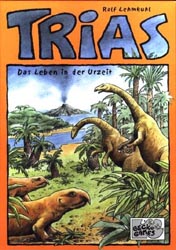
2003: Trias was an interesting design that had a hilarious first play at our club where Mark K's dinosaurs could do nothing but throw themselves into the water. However, the game quickly sunk without trace, just like Mark's dinosaurs, really..
 
1998: Ursuppe was a very clever design and I was quite impressed with it for a while but its appeal faded over time and I sold it some years ago. I think Nige is still a fan. For Sale is one of those evergreen filler card games that I played for the first time in this month. Still gets played as it is very accessible to non-gamers. Groo: The Card Game was also played this month, though not for the first time. It would be nice to try this again sometime as I still have a copy (and the expansion, which I've never played). |
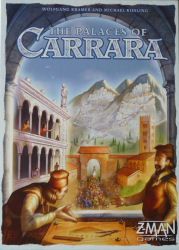 |
Game of the Month - December 2012 (1st January 2013 14:27)
In December, I managed 28 plays of 25 different titles, ten of which were new to me. The new titles were Blockers: The Card Game, CO2, Le Havre: The Inland Port, The Hobbit: The Card Game, Indigo, P.I, Palaces of Carrara, Pluckin Pairs, Roll to the South Pole and Seven Dragons.
I added seven games to the collection, five of which were Christmas presents, and my unplayed games list is only down to 23. My vote for Game of the Month for December is the excellent Palaces of Carrara by Kramer & Kiesling, an elegant design and a very easy choice for my Six Picks list of the best games of 2012.

|
 |
2012 Roundup (1st January 2013 09:40)
2012 saw me play 239 games of 154 different titles (interestingly, just two fewer than the 156 different titles played in 2011 and three fewer than the 157 played in both 2010 and 2009). I find it pretty remarkable how close these numbers are - is my brain only capable of absorbing around 150 rulesets over the course of a year? The total plays at 239 is up quite a bit compared with 200 in 2011, 208 in 2010 and 229 in 2009). My full list of games played is here.
 My most played game was Vegas which saw 7 plays. This is a very enjoyable dice game with lots of ooh and ahh moments and it plays very quickly so is ideal for an end of evening filler. Friday and Timeline: Inventions both racked up six plays each but last year's most played game, Lord of the Rings: The Card Game, didn't get a single play in 2012.
Only three other games reached 5 plays and, of the 154 titles, 111 of them were played just once. My unplayed game list started 2012 at 16, dropped all the way to 4 or 5 but is now sitting at 23.
2012 seemed to produce several good games but not a single stand out game. My six picks for the year were Africana, Lords of Waterdeep, Love Letter, Palaces of Carrara, Santiago de Cuba and Vegas. As with last year, I’ve also done a six picks of solo and two-player games featuring Agricola: All Creatures Big and Small, City Square Off, Equilibrion, Friday, Morels and Targi (with Le Havre: The Inland Port just a shade behind). All in all, a pretty good year. Let’s hope 2013 is just as good. My most played game was Vegas which saw 7 plays. This is a very enjoyable dice game with lots of ooh and ahh moments and it plays very quickly so is ideal for an end of evening filler. Friday and Timeline: Inventions both racked up six plays each but last year's most played game, Lord of the Rings: The Card Game, didn't get a single play in 2012.
Only three other games reached 5 plays and, of the 154 titles, 111 of them were played just once. My unplayed game list started 2012 at 16, dropped all the way to 4 or 5 but is now sitting at 23.
2012 seemed to produce several good games but not a single stand out game. My six picks for the year were Africana, Lords of Waterdeep, Love Letter, Palaces of Carrara, Santiago de Cuba and Vegas. As with last year, I’ve also done a six picks of solo and two-player games featuring Agricola: All Creatures Big and Small, City Square Off, Equilibrion, Friday, Morels and Targi (with Le Havre: The Inland Port just a shade behind). All in all, a pretty good year. Let’s hope 2013 is just as good. |
|